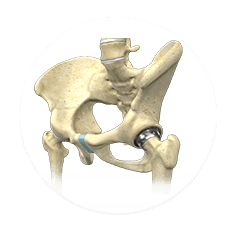Stem Cell Therapy
Indications
Stem cell therapy has found its use in many fields of medicine, with particular advantages in orthopedic injuries. Stem cells are found in various areas of the body and are often harvested from bone marrow, fat, or amniotic fluid.
The use of stem cells for treatment of disease is often referred to as regenerative medicine. Stem cells are most often used for their ability to become specialized cells that help regenerate and repair diseased or damaged tissues. Mesenchymal stem cells have the ability to differentiate into bone and cartilage cells and can be used to treat a wide variety of orthopedic conditions. Some examples include:
- Tendinitis
- Tendon tears
- Ligament tears
- Cartilage damage
- Arthritis
Procedure
Stem cell therapy involves the extraction of stem cells, typically from the bone marrow, fat, or amniotic fluid, and processing of the cells. Once the stem cells are harvested and processed, they can be implanted to the site of damage. This procedure can be done by either using your own stem cells (autologous stem cells) or using stem cells that have been extracted and processed from amniotic fluid (allogenic stem cells).
Amniotic Fluid
Amniotic fluid includes a mixture of stem cells and growth factors, and may also include the amniotic membrane. These cells have the ability to develop into various tissue types including cartilage, tendons, nerves, muscle, and bone. These cells also have the ability to promote healing through the multiplication of reparative cells.
When amniotic fluid is obtained for regenerative medicine purposes, it is sent to a lab where it is then processed and cryopreserved. Cryopreservation is the process of cooling the fluid to a low enough temperature such that the healing properties of the cells are maintained. This fluid is then sent to your healthcare provider’s office where it may be used for injection.
The injection of amniotic fluid is performed as an outpatient procedure, within the clinic office setting. The area of injection is cleansed and the fluid is injected into the area damaged or diseased tissue. The injection is routinely given under the guidance of ultrasound to ensure that the needle is inserted accurately. You may be recommended one or multiple injections to provide the greatest amount of healing.
Autologous Stem Cells
Autologous stem cells are stem cells extracted from your own tissue/body. For this procedure, you will be required to go to the hospital for a very brief, outpatient procedure. Local (twilight) anesthesia will be administered in the operating room. The stem cells are then harvested from bone marrow found in the pelvic bone (iliac crest). A narrow needle is inserted into the iliac crest and a sample of bone marrow is extracted. The bone marrow is then centrifuged and stem cells are separated and obtained.
Once the stem cells have been separated from the other components of the bone marrow, the cells are injected into the diseased or injured region of the body. You will then be awakened from the procedure, and typically discharged home in 1-3 hours.
Potential Effects of Stem Cells:
- Differentiate into tissue specific cells (i.e. cartilage cells or bone cells)
- Encourage tissue regeneration
- Decrease inflammation
- Produce growth factors to enhance the process of healing
Post-procedure Care
Following the treatment, you may experience irritation and mild pain for 24-48 hours. Typically, a day of rest (avoidance of exercise) and cold application to the injection site is all that is needed to reduce mild pain.
Risks and Complications
Stem cell injection is usually a safe and non-invasive treatment procedure. However, as with most treatment procedures, stem cell injection is rarely associated with certain complications. The risks and complications that could be associated with these injections include:
- Increased pain at injection site
- Infection
- Tissue damage
- Injury to neighboring nerves
Undergoing the procedure under the hands of a skilled medical provider can greatly minimize these risks.




